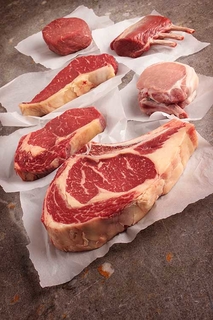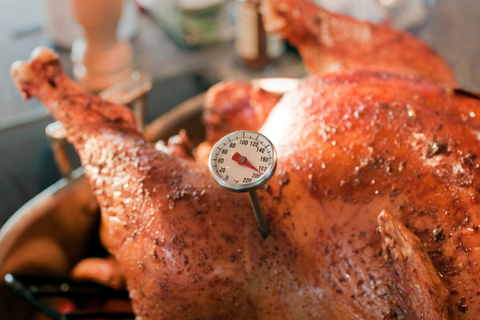What Is The Minimum Internal Cooking Temperature And Holding Time For Prime Rib
- Home
- Food, health and nutrition
- Food safety
- Preserving and preparing
- Safe meat handling and cooking temperatures

Raw pork, chicken and beef may contain germs that can cause illness or death if not refrigerated and cooked properly. The following tips will help prevent bacteria from growing on foods.
- When shopping, take food straight home to your refrigerator. The thermometer in your refrigerator should be set at 40 degrees Fahrenheit or below.
- Freeze fresh beef, pork, poultry and fish immediately if it won't be used within 2 days.
- Keep raw meats and their juices away from other foods. For example, wash hands and cutting boards in hot soapy water after cutting up chicken and before dicing vegetables.
- Use two cutting boards. One for preparing meat. One for chopping vegetables.
- Thaw meats in the refrigerator or as part of the cooking process. Never thaw meat at room temperature.
- Cook meat thoroughly. You could get sick if you eat partially cooked meat. Use a food thermometer to check the temperature (see list below for recommended temperatures).
- NEVER leave foods such as meat, eggs and milk products out of the refrigerator for over 2 hours. When cooking ahead, divide large amounts of food into small containers for the refrigerator. Then germs will not grow on the food as fast.
Foodborne illness (food poisoning)
If you feel nauseous, vomit or get diarrhea, it could be foodborne illness. Depending on the illness, symptoms appear from 30 minutes to 2 weeks after you've eaten bad food. Most often, people get sick 4 to 48 hours after eating bad food. If symptoms are severe or the person is very young or old, pregnant or already ill, call a doctor or go to the hospital.

Safe cooking temperatures
Measure these internal temperatures with a food thermometer according to Safe Minimum Cooking Temperatures.
Eggs and egg dishes
- Eggs - 160 degrees F.
- Egg dishes - 160 degrees F.
Ground meat and meat mixtures
- Turkey, chicken - 165 degrees F.
- Veal, beef, lamb, pork* - 160 degrees F.
Fresh pork: steaks, roasts, chops, ribs
- Medium rare - 145 degrees F; let rest 3 minutes before serving.
- Medium - 160 degrees F.
- Well done - 170 degrees F.
Fresh beef: steaks, roast, chops
- Medium rare - 145 degrees F; let rest 3 minutes before serving.
- Medium - 160 degrees F.
- Well done - 170 degrees F.
Poultry
- Chicken and turkey, whole - 165 degrees F.
- Poultry parts - 165 degrees F.
- Stuffing - 165 degrees F.
- Duck and goose - 165 degrees F.
Ham
- Fresh (raw) - 160 degrees F.
- Pre-cooked (to reheat) - 140 degrees F.
* Hamburger or ground beef should be cooked to an internal temperature of 160 degrees F. Current research has shown that some ground beef may turn prematurely brown before a safe internal temperature of 160 F has been reached. Persons serving high-risk individuals (ill, immuno-compromised, young children and older adults) are especially advised to use a thermometer to measure internal temperature to prevent E. coli 0157:H7 contamination.
Reviewed in 2021
What Is The Minimum Internal Cooking Temperature And Holding Time For Prime Rib
Source: https://extension.umn.edu/preserving-and-preparing/safe-meat-handling-and-cooking-temperatures
Posted by: edwardshimenclayes.blogspot.com

0 Response to "What Is The Minimum Internal Cooking Temperature And Holding Time For Prime Rib"
Post a Comment